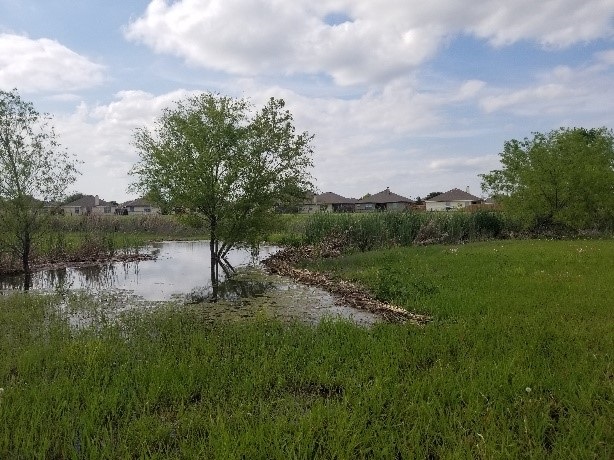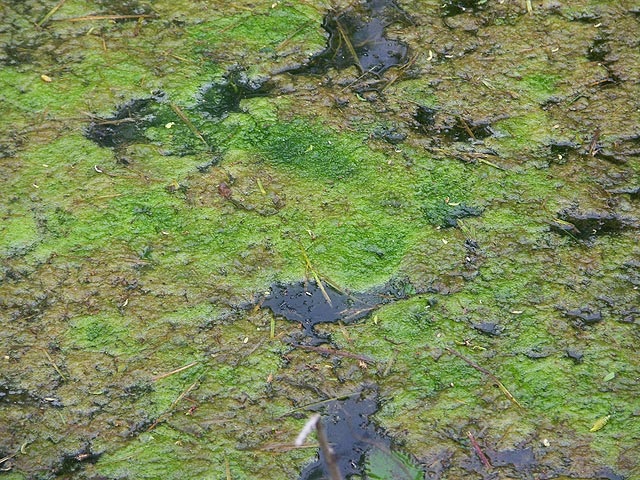Frequently asked questions
Wildlife
Will natural areas increase the likelihood I will see a snake?
Possibly. While you might see a snake next to a stream, river, or natural area, snakes are part of the natural environment.
Will natural areas increase the likelihood of rodents?
No. Rodents are very adaptable and they thrive in urban environments. When their habitat is destroyed or altered, they readily move into our homes.
Is it bad there are beavers in the stream?
Beavers are nature’s original engineer! Native to north Texas, they create habitat for a multitude of other species. In larger parks, beaver dams are fine; and in fact, they create habitat and attract wildlife that make the park more interesting. In some cases, beaver activity can be a problem when their dam blocks infrastructure such as culverts. In some parks, beaver dams will be removed because the park doesn’t have enough room to support a pond. Over time, beaver dams wash out and the natural ponds free-flow into the stream. This is a natural evolution of land-building, as beaver dams retain sediment that settles out over time and builds up the soil.

Will natural areas attract coyotes and raccoons?
Urbanization has encroached upon wildlife habitat. Coyotes and raccoons are very adaptable to urban environments and find it easy to go into yards where house cats, pet food and the rodents that are attracted to pet food reside. To reduce wildlife interactions in and around your home, keep pets indoors or in a fenced yard, don’t leave pet food sitting out overnight and keep litter and food waste/containers in a secured receptacle.
Will water in natural areas harbor mosquitos?
It is true that mosquitoes need water to reproduce. Even a small planter pot in a backyard can collect enough water to breed mosquitoes. The difference between natural bodies of water and a planting pot is that streams, wetlands, ponds, and lakes encompass an entire aquatic ecosystem where there are many predators of mosquitoes. Fish, frogs and toads, aquatic insects, dragonflies, bats, and many birds rely on mosquitoes as a major food source. These hungry animals keep mosquitoes in check in a natural ecosystem. There are no mosquito predators in a planting pot.

Will this encourage egrets and herons to roost in the park?
Egrets and herons are native migratory birds that are protected under the federal Migratory Bird Act. They form colonial rookeries where they roost at night and breed during summer. Natural Areas provide native habitat for these birds, which should attract them away from neighborhood trees.

What is Bird City USA?
Bird City USA is a national program with required criteria for cities to attain certification. Protecting, enhancing and restoring habitats, increasing native plant coverage, increasing public awareness, and promoting environmental stewardship in Texas cities are all conservation initiatives to improve avian (bird) habitat. Fort Worth is certifying as a Bird City Texas city.
Where can I find pollinators?
Pollinators include butterflies, moths, bugs and beetles, bees, wasps, flies and a few bird and bat species. The food web is built upon plants and the pollinators that collect pollen and nectar. Not many pollinators are found in active use, mowed areas. However, you can find an abundance of pollinator species in Natural Areas where plants are able to flower and produce seed.

What is the Mayor's Monarch Pledge?
Mayors and other heads of local and tribal government are taking action to help save the monarch butterfly, an iconic species whose eastern populations have declined by 90% and western populations by 99% in recent years. Through the National Wildlife Federation's Mayors' Monarch Pledge, U.S. cities, municipalities and other communities are committing to create habitat for the monarch butterfly and pollinators, and to educate residents about how they can make a difference at home and in their community.
National Wildlife Federation
Vegetation
I see a lot of ragweed along the creek. Why is it there?
Giant ragweed is a native plant that grows in wet soils. It is one of the first species to establish along stream banks, pond and lake shorelines when the water recedes. It provides seed and shelter to wildlife and over time will decrease in abundance as other higher quality plant species replace it and shade it out. In some limited cases, park staff may thin the ragweed.
How will natural areas be maintained?
It varies. Some areas will be mowed once per year or every three years, while others will evolve into mature riparian stream buffers.

I see green algae in the pond. Is that bad?
It depends. There are many species of native ‘green’ plants that grow in ponds and streams. The first step is to determine what the species are and if they are out of control. Some ponds have fountains that aerate the water, which reduces algae blooms. If algae becomes a serious problem, the Park Department may employ several techniques to control it. Learn more about native and non-native aquatic plants.

How does vegetation help mitigate flooding?
In parks where there is room for flood waters to spread out, the vegetation helps slow the water, thereby limiting the flowing waters’ energy and erosion potential. Vegetation acts in a similar manner as man-made cement and rock structures. But better! Parks also serve as vital City green stormwater infrastructure by slowing flood waters and providing space for the water to settle; increasing infiltration to recharge underground aquifers, thereby helping to prevent downstream flooding of neighborhoods.
How do Natural Areas help with erosion?
By mowing all vegetation, water erosion increases along stream banks. The vegetation acts as a natural armor for banks and takes most of the force of water during a storm event. If no vegetation is left to protect the soil, it erodes and washes away. Erosion decreases water quality and clarity, stresses aquatic species and silts up lakes downstream. The erosion eventually moves inland away from the stream bank and threatens infrastructure and property. Excessive stream bank erosion results in costly repairs.
The non-mowed vegetation is unsightly. Why isn't it maintained like a golf course?
Parks serve multiple purposes ranging from active recreation to flood mitigation. Active use areas such as soccer and baseball fields, dog parks, skate parks, playgrounds, and golf courses are maintained by frequent mowing. Natural Areas in parks are where nature reigns. These areas allow for passive recreational activities such as trails, nature-viewing, and exploration. Natural Areas also provide ecosystem services such as floodwater slowing and detention, wildlife habitat and connectivity, and filtering our drinking water and the air we breathe.

The vegetation catches trash. Who will pick up the litter and debris?
In an urban environment, litter on our streets and waterways present an ongoing challenge. Park staff frequently picks up litter in parks. Keep Fort Worth Beautiful, whose mission is to educate and engage Fort Worth residents and businesses to take responsibility for improving their community environment, organizes volunteer groups to pick up litter in parks and streams. Adjacent neighborhoods and park visitors can help by safely picking litter up when they can. Nearby neighborhoods can help by securing their household trash and placing their trash at the curb the morning of their scheduled solid waste pick-up.
Will the tall vegetation create hiding places for illicit and illegal activities and homeless camps?
While these activities can take place anywhere, vegetation creates areas where this type of activity may occur. Park staff visits parks frequently and Fort Worth Police Department patrols parks. When homeless camps are discovered, the City of Fort Worth has humane protocol to address the situation. Vegetation management procedures will adapt in response to illicit and illegal activities.
There are a lot of invasive species in my park. What can be done?
The Park Department prioritizes parks with extreme invasive species problems. As time and resources allow, staff employs numerous methods to remove and control invasive species. If you would like to volunteer to assist with invasive species control; or if your neighborhood association would like to adopt a park, contact us at: https://www.fortworthtexas.gov/departments/parks
Why is someone taking photos of the natural area?
The Natural Areas are being monitored through photos. Taking photos will help the City of Fort Worth monitor plant succession and its effects on erosion prevention and increased plant and animal diversity.
What happens if the vegetation catches fire?
The Park Department maintains the majority of all parks via biweekly mowing. A firebreak is mowed around the Natural Areas and stream buffers. The Fort Worth Fire Department is trained to respond to wildfires, and the mowed firebreaks will help control the spread of a fire.
|